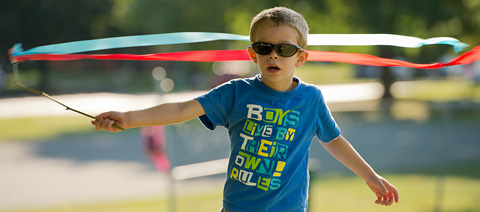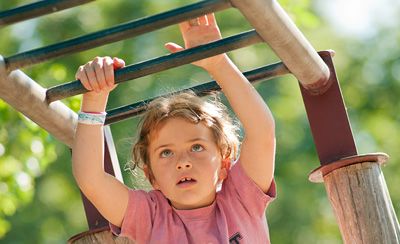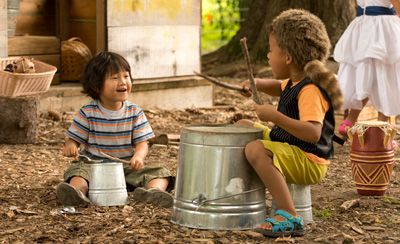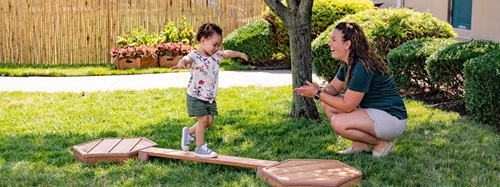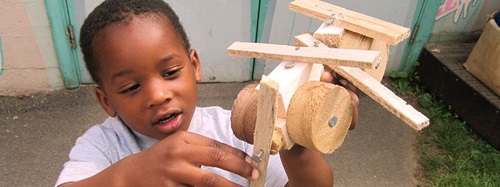Raising Intelligent, Self-Reliant Kids
Practical Advice in an Impractical Society
|
February 2016
Have children changed?
“Kids have changed.” We have heard this statement repeatedly from educators, parents, and the media. However, in reality, kids haven’t changed; society, parents, and schools have changed. These changes have transformed the way our children play, interact, and learn. Fluctuations in social and educational norms have created issues beyond poor behavior in children. We have raised a generation of socially, cognitively, and physically underdeveloped children, leaving parents and teachers struggling to find solutions.
The United States faces an epidemic of unparalleled proportions. The social concerns that must be addressed to help our children have three primary causes: abuse of technology, aversion to risk, and a decline in physical activity.
1. Abuse of Technology: Lev Vygotsky, theorist, teacher, and psychologist, stated that we learn through a cultural lens. Learning takes place through interactions with others. Children, therefore, must interact with other people and the environment around them in order to grow and develop into productive citizens. However, because of technology they are increasingly isolated from the world outside, relying on video games and TV to provide them with their social rules and norms.
2. Risk-Aversion: Risk taking is limited or non-existent when you are not interacting with others. With adults scheduling almost every aspect of their day, school-age children are not given chances to simply play and make up their own games. They have little free time to just be kids and the free time they have is often spent in front of the TV or computer. According to the National Association for the Education of Young Children, there is a direct correlation between reading and risk-taking. Reading out loud means you are opening yourself to possibly be ridiculed or embarrassed. Children who never risk being vulnerable have a difficult time becoming fluent readers.
Risk has also been eliminated from our playgrounds. In the name of safety, the slides, swings, and merry-go-rounds of the past are gone. These items provided children with the chances to practice appropriate risk taking. Children could successfully navigate the “risky” playground equipment, gaining self-confidence and courage.
3. Physical Inactivity: The United States has become a still society—from the oldest to the youngest. Adults ride to work in cars, sit at desks, watch TV, play video games, and socialize on the computer. Infants spend up to four hours per day in car seats, carriers, baby backpacks, bouncy seats, and infant swings. Because of this, they do not develop the muscles needed to crawl, which help with later visual perception skills, and the spatial awareness needed to copy notes off the board or read fluently.
Providing the Antidote
What can we do as educators and parents to ensure that children are provided with the proper tools to succeed in today’s society against these odds?
1. Provide Space and Time for Physical Activity: Movement is the catalyst for cognition. Physical activity influences the part of the brain, the cerebellum, which handles memory, attention, and spatial perception. Children need plenty of time and space to exercise their large muscles in order to be successful in school.
It is ironic that, in an educational world where we know many children are kinesthetic learners, we expect them to sit still at desks to learn. Movement increases the blood flow that carries important nutrients to the brain. Recent scientific investigations have proven that movement stimulates dendritic growth, even in Alzheimer’s patients. Dendritic growth creates new pathways for information to be processed in the brain. Movement must be present in order for learning to take place.
Physical movement also provides opportunities to develop important “cross-lateral” skills: the ability to coordinate movements crossing the midline of the body. Every time the midline is crossed, a window is opened in the brain creating new connections and enhancing cognition. Activities that cross the midline help facilitate reading development. For example, scarf juggling is an activity that teachers can include in class that crosses the midline and helps develop eye-coordination.
Playing games also encourages social development. When children participate in sports they learn how to work on a team, compromise, lose gracefully, and offer encouragement and empathy to others.
Movement is the catalyst for cognition
2. Provide an Environment that Fosters Curiosity: A disposition for curiosity is the common characteristic found in inventors, scientists, explorers, and entrepreneurs. They are all creative people with a strong sense of wonder who are not afraid to take a risk. Steve Jobs, John Glenn, Bill Gates, and Thomas Edison, all innovative and resourceful people, who wondered what would happen if. . . . Curiosity is what education is about. Unfortunately, for many children, their developing sense of wonder is constricted by overly structured programs and testing in school.
An appropriate environment is crucial in fostering curiosity and wonder. Children should be allowed to explore, experience risk-taking, and create without the fear of ridicule or being hurt. As parents and teachers we can set up the environment to encourage wonder and creativity. This can be accomplished by providing children with open-ended materials such as flour, vinegar, baking soda, play dough, blocks, and finger paints. Let the children explore and experiment. What happens if you add baking soda and vinegar together? What happens when you use an eye dropper instead of a paint brush? Remember it is not the product we want children to be interested in, but the process. All experiences in the classroom must be authentic.
Children must experience their learning in order to retain and comprehend knowledge. Imagine trying to learn to swim, or ride a bike, from a book or YouTube video without hands on experience! Experience is not just the best method for teaching; it is the only method for teaching. The more a child is allowed to experience the thrill of exploring and experimenting, the more their disposition for curiosity and their love of learning will increase.
An environment that fosters creativity will also generate constructive play. Children who play with blocks and construction materials are gaining background knowledge in mathematical and science skills such as gravity, stability, measurement, fractions, and spatial awareness. When adults create an environment that allows children to build structures and take things apart, they are creating an environment rich in technology, mathematics, and exploration.
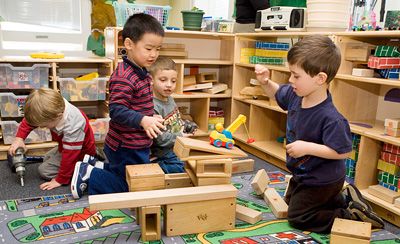
Experience is the best teacher
3. Bring Back the Arts! In the United States, we have a traditional hierarchy of subjects taught in school with math, science, and literacy predominating. Creative arts fall at the bottom. We believe that the academic subjects are the most important to prepare children for the job market. However, we cannot predict what the job market will be like 20 years from now due to the fact that our world is changing so fast. It is of vital importance that children develop the ability to innovate, create, and adapt to future changes. Subjects such as music, art, and dancing allow children to be creative, take risks, and express themselves in innovative ways.
As children enter school we must see the child as a whole and not educate them only from the neck up. If we think that the purpose of education is to just develop the brain, we forget that there is a connection between the mind and body. If we only honor academic ability, we forget that music, art, and dancing, are part of the humanities. We must acknowledge that these subjects are an integral part of our culture and should be honored and encouraged. It is a myth that not everyone is creative. Each child has the potential for creativity unless it is educated out of them.
The vital connection between mind and body must be nurtured in early childhood.
The Importance of Risk Taking
Why should we want children to be risk-takers? When children take risks, it builds resilience, develops an inner self-esteem, improves reading skills, and prepares them for their future. As an adult, risk-taking is an inevitable part of life. We need to be willing to take risks to speak in front of a group of people, attend a job interview, or join a new club. When we over-protect or criticize children in a personal way, we knock the capacity to risk out of them. If you are not prepared to make a mistake, you will never take a chance, experiment, or try something new.
As parents and teachers we only want the best for our children. We want to ensure that they have the skills needed to succeed as an adult. In order to help children become productive adults we must allow children to engage in activities that are age and developmentally appropriate. The best education we can provide our children is experience—let them experience the world around them. We must allow children to be creative and take risks if we want them to grow into productive, well developed citizens.
References:
Bos, Bev. 1996. Engaging Your Preschool Learners: Resource Handbook. Bellevue, WA.: Bureau of Education & Research. Print.
DAP Position Statement | National Association for the Education of Young Children | NAEYC
Grace, E. 2013"Vygotsky & Socio-Cultural Theory." Kids Development, 4 Aug. 28 Jan. 2016. http://www.kidsdevelopment.co.uk/VygotskySocioCulturalTheory.html.
Robinson, K. 2011. "Positive Psychology: Sir Ken Robinson-Changing Paradigms." Lewison Positive Psychology 28 Jan. 28 Jan. 2016. http://lewisonpositivepsycholgy.blogspot.com/2011/01/transcript-sir-ken-robinson-changing.html.

